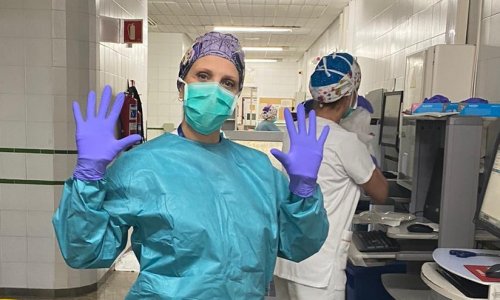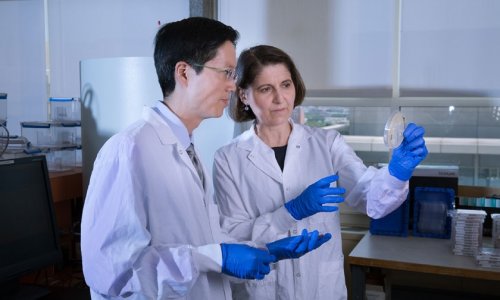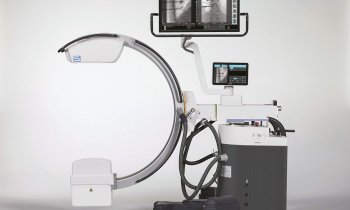cleanyourhands
Success for the world's first national hand washing campaign
UK – The first national hygiene campaign in the world to target healthcare workers in all acute hospitals in a country’s healthcare system was rolled in the autumn of 2004 to all 187 acute NHS Trusts in England and Wales.
Developed by the National Patient Safety Agency (NPSA), and simply named the cleanyourhands campaign, it was launched to help combat the spread of healthcare associated infection (HCAI) and promoted the placement of alcohol hand rubs at each bedside, as well as using soap and water, posters on the wards, patient empowerment materials (e.g. they were advised: ‘It’s OK to Ask’, i.e. as to whether a carer had washed hands).
In spring 2008, the campaign was extended to NHS primary care, ambulance, mental health and care trusts, and the publication NPSA Patient Safety Alert was updated and reissued to all in autumn last year.
Guidance and good practice recommendations follow the WHO guidelines for healthcare staff hand hygiene.
1ml of alcohol hand run reduces MRSA by 1%
In December 2008, the independent NOSEC study (national study to evaluate the cleanyourhands campaign) carried out by UCL (University College London) researchers, concluded that one ml of alcohol hand rub reduces MRSA by one percent.
The collaborative study with the Health Protection Agency, London School of Hygiene and Tropical Medicine, and the Hand-Hygiene Liaison Group, led by Dr Sheldon Stone of the Royal Free Campus of the UCL Medical School, found a three-fold rise in procurement of alcohol hand rub and soap over the period 2004-2007. Combined soap and alcohol rub procurement rose from 20 ml per patient-bed-day (July 2004) to 37 ml (July 2005-June 2006) to 65 ml (December 2007). The study also found a strong correlation between each extra ml of alcohol hand rub per patient bed day and a one percent fall in MRSA bacteraemia.
‘Our study shows that hand-hygiene lowers hospital superbugs,’ Dr Stone commented, adding: ‘Our message to healthcare workers is: “One ml….one percent”. The findings also serve as a reminder that we should be washing our hands in the home and workplace.’
The study’s findings on the success of the campaign, presented in a lecture at 19th ECCMID Congress in Finland, were based on 6-monthly questionnaires to 187 acute hospitals that had implemented CYHC. Monthly procurement data for soap and AHR acted as a proxy for HH compliance. National mandatory quarterly HCAI data [methicillin resistant & sensitive S. aureus bacteraemia (MRSAB & MSSAB) & C. difficile infection] & bed occupancy were collected for each hospital & data on potentially confounding national interventions (Saving Lives, Department of Health Improvement Team Visits & MRSA screening). Analyses: Generalized estimating equation (population-averaged) models with an exchangeable within-group correlation structure.
Results: 82% of all hospitals responded to the last questionnaire (June 2008). Even after 3 years, CYHC was still a top priority in 92% of hospitals, with bedside AHR in most wards in 94%. Posters were displayed in most wards by 96% of hospitals, with Audit & Feedback in most wards in 86%. Patient Empowerment materials were less successful.
Procurement of AHR, but not soap, rose significantly during CYHC roll out, levelled off for a year, before rising continuously & significantly, as did soap, from mid 2006. Combined soap & AHR procurement tripled over the study period.
MRSAB rates halved but no other HCAI fell. From July 2006-Dec 2007, each extra ml of AHR per patient-bed-day was significantly associated (p<0.0001) with a 1% fall in MRSAB but this association did not continue in Jan-Jun 2008. Specialist & Teaching Hospitals (p<0.001) & Improvement team visits (p=0.004) were strongly associated with MRSAB rates.
The researchers concluded: ‘The CYHC is associated with a sustained change in HH behaviour in acute hospitals nationally, with a three-fold rise in procurement/use of AHR & soap. There appears to be a strong association between reduction in MRSAB & use of AHR. This may reflect interactions between improvement team visits or other confounders & CYHC. The campaign should be continued & is a model that other countries could adopt/adapt.’
01.07.2009






